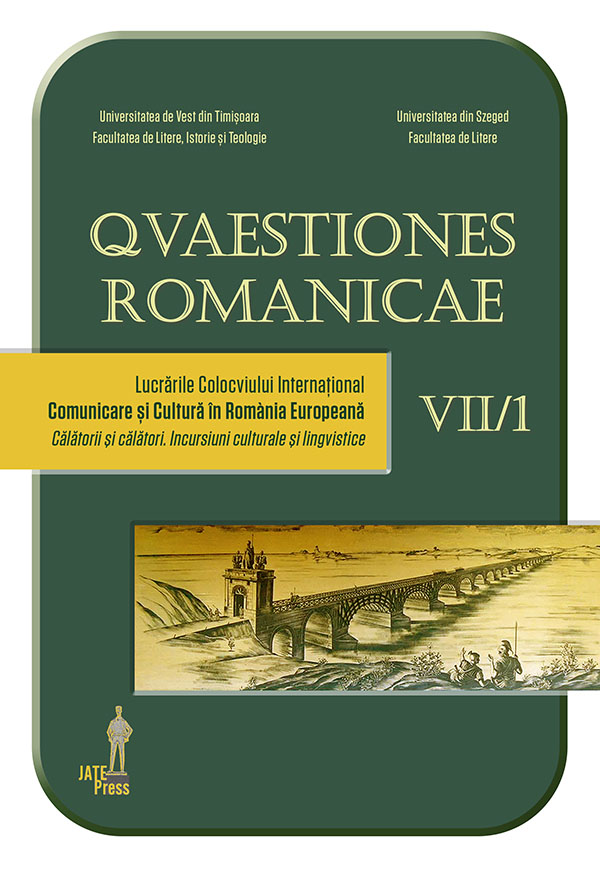Viaggiatori a Trieste alla fine del XVIII secolo
Abstract: (Travelers to Trieste at the end of the 18th century) By the end of the 18th century, the city of Trieste was the destination of four travellers, who left us a report of their travels. The Transylvanian Domokos Teleki visited Trieste in 1795, starting from Pest, crossing the Southern Transdanubia, Croatia, and the Hungarian Coast with the city of Fiume. Teleki dedicates several pages to Trieste, proving to be an acute observer of the local reality in many of its aspects: cosmopolitanism, economy, port trade, industries, town–planning, healthcare. Teleki (but in general also the others travellers) describes Trieste as a city in full development and growth, extremely active and above all very prosperous. In September 1797, Trieste was visited by General Desaix, who, taking advantage of a gunfire truce on the Rhine front, where he fought with the French army, proceeded to a trip to Northern Italy for military service purposes, but also for leisure and personal culture. Desaix’s travel report, unlike the Teleki one, consists of a series of very synthetic notes. His diary is much more intense than that of his fellow–countryman and more famous Stendhal, who would visit Trieste about thirty years after the French general. In 1797 Trieste was also visited by the great historical orientalist Joseph Hammer von Purgstall, who was especially attracted by the colourful mix of people who thronged the streets of Trieste. The visit of Hammer was followed one year later by that of the travel–writer Carl Gottlob Küttner, which contains a wealth of information on the history of his time, as a result of extensive research and acute observations. Küttner was a deep connoisseur of men and mastered several languages, too.
Keywords: Travel literature, Trieste, Domokos Teleki, General Desaix, Joseph Hammer von Purgstall, Carl Gottlob Küttner.
Riassunto: Alla fine del XVIII secolo la città di Trieste fu la meta di quattro viaggiatori, che ci hanno lasciato un resoconto nelle loro memorie. Il transilvano Domokos Teleki visitò Trieste nel 1795, partendo da Pest e attraversando il Transdanubio meridionale la Croazia e Fiume. Teleki dedica a Trieste parecchie pagine dando prova di essere un acuto osservatore della realtà locale in molti dei suoi aspetti: il cosmopolitismo, l’economia, i traffici portuali, le industrie, l’urbanistica, la sanità. Teleki riesce a comunicare al lettore l’impressione che riceve da Trieste come di una città in pieno sviluppo e crescita, oltremodo attiva e soprattutto molto prospera. Nel settembre del 1797 Trieste fu visitata dal generale Desaix, il quale, approfittando di una tregua d’armi sul fronte del Reno, dove combatteva al seguito dell’esercito francese, compì, anche per fini di servizio militare, ma soprattutto per svago e cultura personali, un viaggio nell’Italia settentrionale. Il diario di viaggio di Desaix, a differenza di quello di Teleki, consiste in una serie di appunti molto sintetici. Il diario di Desaix è però molto più incisivo di quello del suo connazionale e più famoso Stendhal, che avrebbe visitato Trieste una trentina d’anni dopo il generale francese. Nel 1797 Trieste fu visitata anche dal grande storico orientalista Joseph Hammer von Purgstall, che fu particolarmente attratto dalla variopinta mescolanza di genti che affollavano le strade di Trieste. Di un anno successivo alla visita a Trieste di Joseph von Hammer è quella del tedesco Carl Gottlob Küttner, scrittore di libri di viaggi contenenti numerose informazioni sulla storia della cultura dei suoi tempi, frutto di vaste ricerche e acute osservazioni. Küttner era un profondo conoscitore degli uomini e dominava parecchie lingue.
Parole chiave: Letteratura di viaggio, Trieste, Domokos Teleki, Generale Desaix, Joseph Hammer von Purgstall, Carl Gottlob Küttner.
